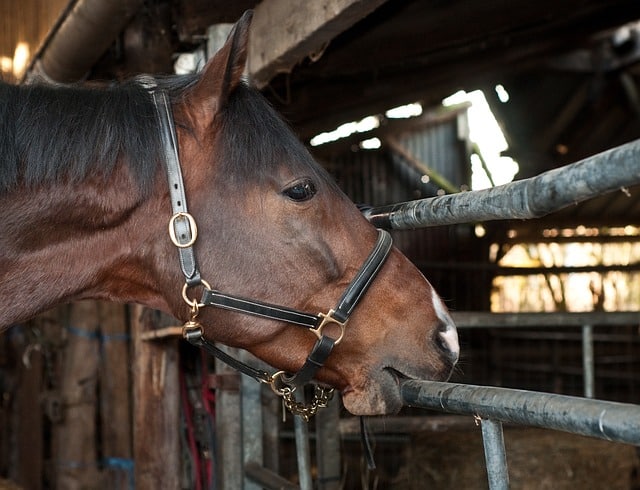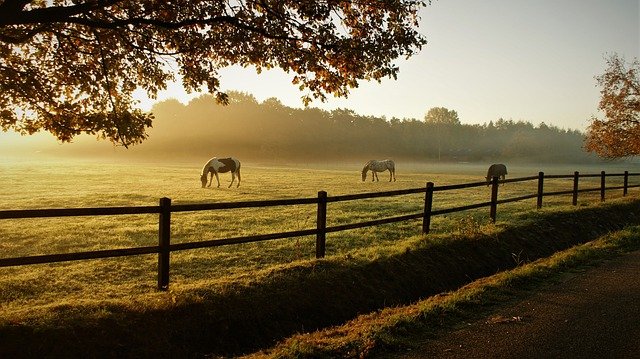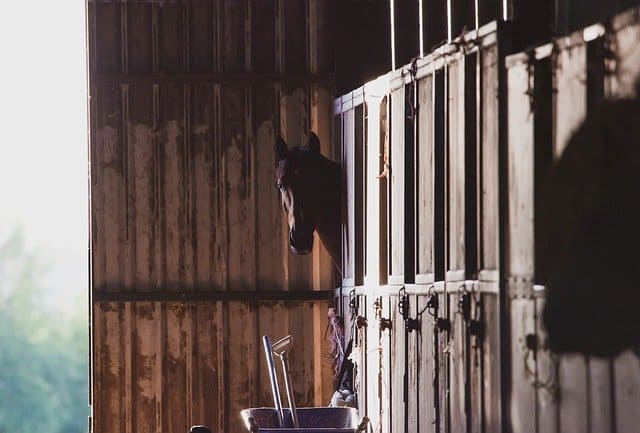Well there has been a big push in recent years about looking after our Mental Health, but what about our horse’s mental health? In our enjoyment of everything equestrian is how we keep our horses really what’s Best for their Mental Well Being? The Short answer is No, unfortunately; quite often how we keep our horses can lead to a variety of Problems which become collectively known as Stable Vices. These Stereotypical behaviours tend to be repeated over and over by the animal with no apparent function to the behaviour. Here we will take a look at some of the most common Stable Vices and look at ways to avoid their occurrence.
Cribbing & Windsucking

Crib Biting or Cribbing occurs when the horse grabs either on to the stable door or manger and sucks in air. Some horses will actually start to Windsuck, this is where the horse no longer needs to grab anything with its teeth to suck in air and make the gulping sound. Research has suggested that Cribbing/Windsucking is most likely linked to the management of the horse, for example stabling the horse for most of the day, with high concentrate rations and only 2 to 3 mealtimes certainly seems to contribute to the problem. In fact, some studies have shown a reduction in cribbing when the horse is fed smaller amounts of feed more often, having up to 5 small mealtimes per day. It has been suggested there may be a link to Cribbing/Windsucking and the increase of the production of saliva which will have an alkaline effect on any increased acidity of stomach acid which often occurs when feeding concentrates. While further evidence has proven that cribbing in foals occurs due to the presence of stomach ulcers and research into the use of antacids in such cases has begun.

Perhaps it is not surprising that some horses start to crib in a stabled environment, as the horse by nature is a plains grazer eating up to 17 hours a day in the wild, living in a herd scenario with plenty of contact with its own kind. Taking any animal and changing what they would naturally do is bound to have an adverse effect. Therefore when it comes to Cribbing/Windsucking avoiding the development of such a habit is of the utmost importance.
Weaving
Weaving is when the horse sways back and forth from one forelimb to the other, usually with their head out over the stable door. This often occurs in an anxious type of horse that is awaiting or looking forward to something, such as feed times, turnout to the paddock etc. However, if this type of stereotypical behaviour becomes ingrained, the horse may begin to weave any time that he is stabled and feeling stressed or anxious. Weaving can become so bad that it can have an adverse effect on the forelimbs of the horse, causing problems with the feet and joints.

Box Walking
Box walking occurs when the horse walks around and around his stable constantly. Again Box walking usually occurs in an Anxious Energetic type of horse that has been stabled for long periods. Some horses will Box Walk around feeding times, waiting to be turned out to the paddock, or when seeing other horses enter and leave the yard. When this behaviour becomes ingrained, you may find that the horse will repeat the behaviour in the paddock, again around the time he/she believes that they should be going back into the stable.
Causes of Stable Vices/Stereotypical Behaviours
The cause of Stable Vices or these Stereotypical behaviours is still being researched in many cases. However, as previously mentioned the horse is genetically designed to roam the wide open plains in a herd, grazing and hanging out with its own kind. When we remove an animal from its natural environment and confine it to a stable for most of the day, there is bound to be some repercussions.
There have been discussions to a genetic component to many of these vices, i.e. certain horses are more genetically predisposed. While others believe that many of these stereotypical behaviours can be learned or copied, such as Windsucking or Weaving. I believe that the reason lies somewhere in between, for example a horse that is a more anxious type naturally, may pick up certain stereotypical behaviours. However, none of these behaviours have been witnessed in wild horses, bringing us right back to our management of a creature that is meant to be on the move. There is definitely evidence to demonstrate that the way we keep our horses will have a direct effect on their well being, therefore we must aim to keep our horses in a manner that allows them sufficient freedom and time with their own kind, in an effort to keep them happy and healthy.
Management & Prevention of Stable Vices.
As for the Management and prevention of Stable Vices the main thing to do is aim to give your horse as much downtime in the paddock as is physically possible. Paddock time allows the horse plenty of freedom to expel any pent up excess energy and if he is out with companions, it provides the necessary horse to horse contact that is so important for his well being.
When stabled, a hay net or ad lib hay, will help to keep his mind occupied, as will having a regular yard routine. Yes horses have very accurate biological clocks, and when these clocks are disrupted through poor management the horse will become stressed.
It has been suggested that having an equine mirror installed in the stable has been beneficial in reducing weaving in horses. While having a stable companion such as goat in the stable with the horse has also shown some beneficial affects with both weaving and box walking or horses that are anxious in the stable in general.
As for Cribbing & Windsucking, good quality ad lib forage, along with plenty of paddock time is the best remedy.
It has been suggested that many of these stereotypical behaviours can originate at weaning especially a foal that is weaned alone. Therefore it is far better to wean foals together to give them the equine to equine contact that they so need.
In Conclusion
With any Stable Vice or Stereotypical behaviour, prevention is better than cure. Aim to have a set routine for your yard, for feeding, mucking out, exercise etc. Also ensure to allow your horse plenty of paddock time to graze and hang out with his own kind, this is of the utmost importance for his mental well being. Lastly when the horse is stabled, ensure that the horse can see others and also that there is plenty of good quality forage available for him to keep his mind occupied, giving him something to nibble when he becomes a little bored or anxious.
This Article was originally published in the December 2020 Issue of Irish Sport Horse Magazine.
